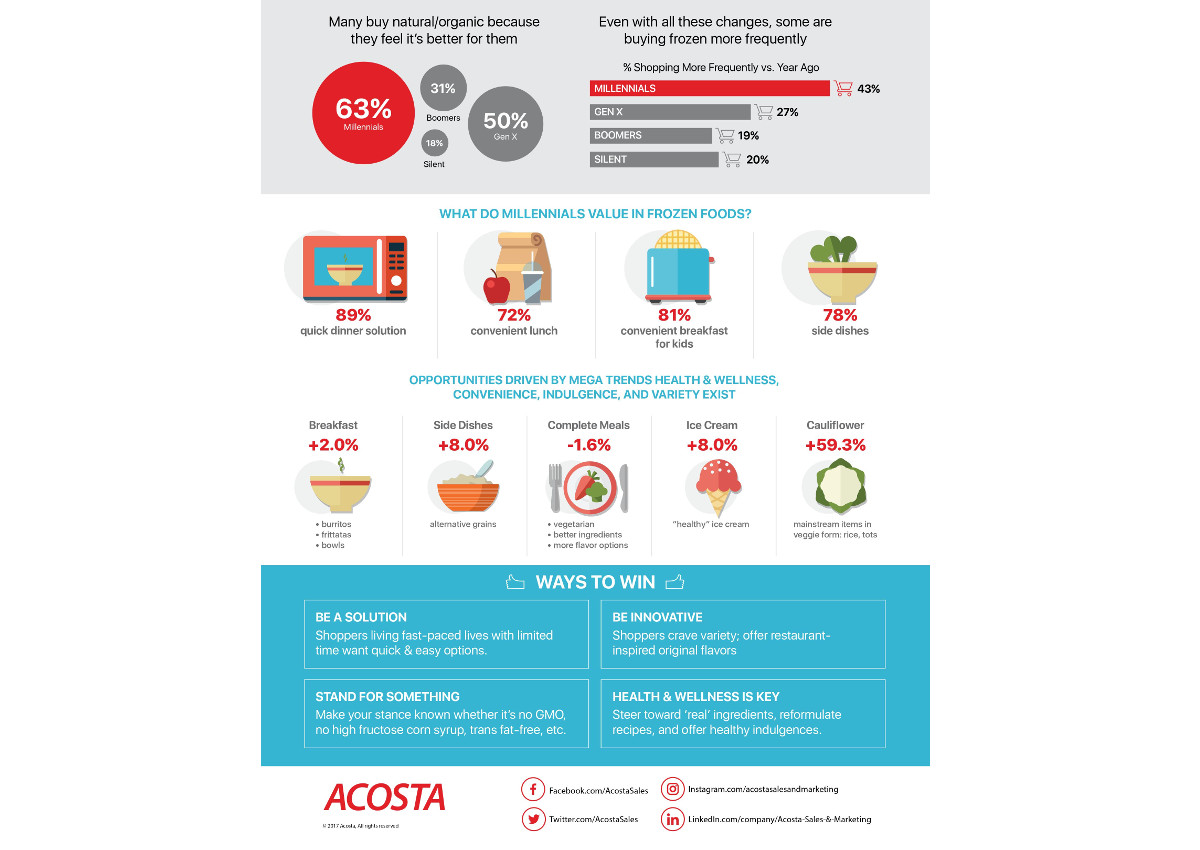Convenience and quality are driving sales of frozen food in the United States, helped by demand from younger consumers looking for convenience and healthy options. Vegetables, protein-rich options are the favorite of the Millennial generation, who spent 9% more on frozen foods per shopping trip last year than other groups, Foodingredientsfirst reported, citing research by RBC Capital Markets.
FROZEN FOOD IS NOW BETTER FOR YOU
Although fresh products are generally perceived as healthier than frozen by 68% of shoppers, which has been a reason for the weaker performance of the frozen aisle in recent years, the wind is changing. According to The Future of Frozen report by Acosta, 26% of US grocery consumers bought frozen foods in 2017 more frequently than the previous year. The trend applies to every generational group: 43% of Millennials, 27% of GeXers, 19% of baby boomers and 19% of silent, Acosta said.

ALL NATURAL, FREE-FROM DRIVING GROWTH
Natural foods, free from antibiotics and hormones, rich in protein, low in sodium, also dominate the frozen segment. Convenience is a key factor, too: 41% of the people polled by Acosta said convenience is the reason for buying more frozen products for easy-to-make meals. About 89% of Millennials value frozen foods as a quick dinner solution. According to a report by Allied Market Research, the global frozen vegetable market is forecast to reach around 35 billion dollars by 2023 from about 25 billion in 2016, rising a compound average growth rate of 4.7% from 2017 to 2023. The United States accounted for around one-fifth share of the global market in 2016.
DOLLAR SALES OUTPACING VOLUMES
Premium quality is boosting dollar sales higher than volumes. In the first quarter of 2018, dollar sales of frozen food products rose, while volumes declined. Dollar sales were up 3% in January, 2.8% in February and 1% in March, according to IRI data. Monthly unit sales were up 0.2% in January and February, and down 0.2% in March, after a significant slump in February.

GELATO AS A GOOD TEMPTATION
Ice creams and gelato are kings of indulgence, but if they’re healthy that’s better for consumers. Low-fat, low-sugar alternatives with natural ingredients are preferred by grocery shoppers. American stores now offer a variety of natural flavors, mixed with fruit, coming in smaller packages for those who want to keep temptation under control. True Italian gelato is also gaining market share in competition with the more popular ice cream. Americans are starting to appreciate the softer, creamier texture of gelato, especially when available in a variety of mixed flavors. Nearly one in three Millennials have purchased frozen foods online, mostly via a grocery delivery service (68%), or from a pure-play retailer (68%), Acosta said.

